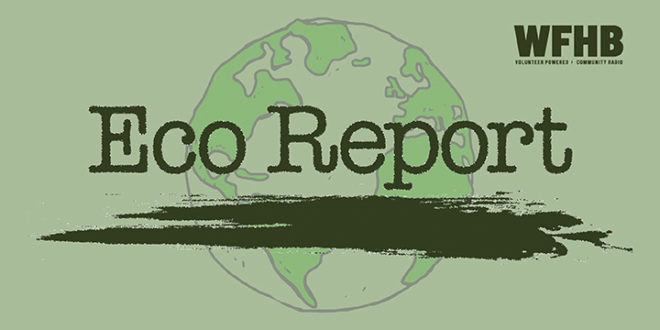Podcast: Play in new window | Download (Duration: 29:49 — 41.0MB)
Subscribe: RSS
Good afternoon. This is Eco Report for Friday, April 14th, 2023.
Coming up in this half hour, Environmental Correspondent Zyro Roze speaks with Tim Maloney, Senior Policy Director for the Hoosier Environmental Council about what’s going on in the Indiana Legislature this year regarding matters directly impacting our Ecosystem.
And now for your environmental reports:
Indiana Legislature Does Bidding of Coal Interests

The Indiana Legislature has done the bidding of the coal interests and made rooftop solar power much less attractive.
Since 2004, the Indiana Utility Regulatory Commission has required the state’s five investor-owned, for-profit utility companies to offer net metering to all electric customers. The policy allowed those customers to sell their extra energy back to utilities at the same rate utilities charged customers for electricity.
A bill approved by legislators in 2017 started to phase out that system, with the official end date landing on July 1, 2022. Now all five investor-owned utilities have been approved for instantaneous metering. The system lets utilities charge customers the retail rate for power they use from the grid. Energy customers send back to the utility is then bought at the lower, wholesale rate.
Add it all up, and the new, lower rates represent some of the most dramatic cuts to net-metering policies in the country, according to Ben Inskeep, program director of Citizen Action Coalition of Indiana, the state’s largest consumer and environmental advocacy organization.
“We really are an outlier in terms of having really terrible rooftop solar compensation policies in place,” he said. It’s much, much worse than many states in the country, and it’s worse than any of our neighbors.
The legislators have amply proven they have no interest in taking the steps necessary to mitigate climate change.
Massive Fire Breaks Out at Recycling Facility in Richmond

The massive fire that broke out at a Recycling Facility in Richmond Indiana on Tuesday, prompting the evacuation of citizens and residents within a half mile radius of the property, was contained to the site. Water from the dousing of the fire was to be contained on the site for treatment.
The Facility , which stored plastic for resale was repeatedly cited by the City of Richmond for the state of the building and grounds as a fire hazard, but ignored those citations according to Richmond Mayor Dave Snow and was recently ruled against in Court.
E-P-A and Health Department officials assured the public that threats from particulate matter could affect the elderly, those with chronic health conditions like C-O-P-D and Asthma, and though the smoke was sure to include carcinogenic compounds, the twenty four hour monitoring equipment did not detect harmful levels in the air and the water supply. The plume of burning plastic could, however,be hazardous to pulmonary health of both people and pets.
Residents were advised that N95 masks would help filter out particulates and advised to not mow debris blown from the site into their yards as it may contain things like Asbestos insulation and other toxic materials.
Richmond is home to some thirty-five thousand people, and folks downwind were advised to close their windows and bring pets inside. Temporary shelters were set up and provisions were being made for hotel rooms as the black cloud crossed the border into Ohio.
EPA Tightens Limits on Mercury and other Pollutants from Power Plants

According to the New York Times, the coal people are not pleased with the latest move by the EPA to tighten limits on mercury and other pollutants from power plants. A new rule would reduce mercury, arsenic, nickel and lead emissions, which the Biden administration said would protect public health.
The Biden administration said that it would require coal- and oil-fired power plants to reduce emissions of several hazardous air pollutants, including mercury, a neurotoxin that can cause developmental problems in infants and children. The proposed rule from the Environmental Protection Agency has two broad policy aims: Reduce dangerous toxins in the environment, while also encouraging the transition away from coal-burning power plants and toward cleaner energy sources like solar and wind.
The proposal sets up a likely legal battle with the coal industry and several Republican-led states, which fought to block a previous effort to regulate mercury under the Obama administration. The Obama-era rule, which took effect in 2012, was credited with reducing mercury emissions by about 90 percent.
However, the EPA found that mercury coming from power plants still posed a risk to human health. So the new rule aims to strengthen the limits for mercury emissions from affected coal-burning power plants by 70 percent. It also would further restrict other toxic pollutants like lead, nickel and arsenic.
Michael S. Regan, the administrator of the EPA, said in a statement that the rule would not be expensive for plant operators to implement because of new technologies that are available for monitoring and controlling of emissions.
“By leveraging proven emissions-reduction measures available at reasonable costs and encouraging new, advanced control technologies, we can reduce hazardous pollution from coal-fired power plants, protecting our planet and improving public health for all,” Mr. Regan said.
The E.P.A. estimated that the health benefits over the lifetime of the rule would be between $2.4 billion and $3 billion, from the prevention of deaths or hospitalizations for respiratory and cardiovascular disease. The agency put the estimated cost to the industry of complying with the rule at between $230 million and $300 million.
Helpful Tips for Morel Mushroom Season
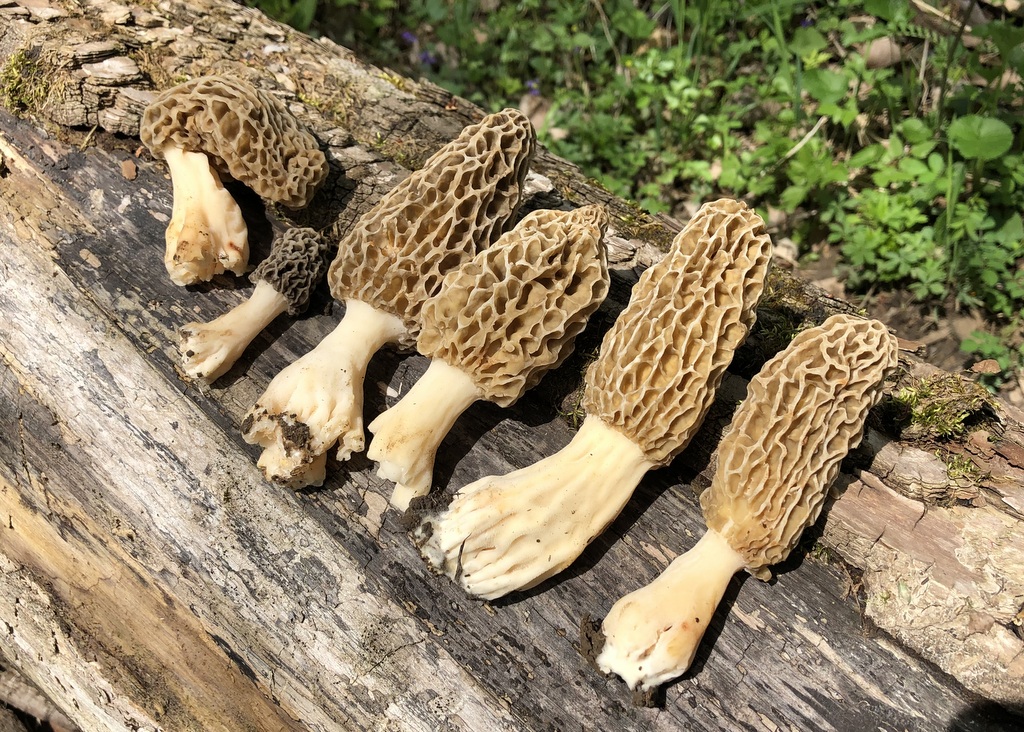
Morel mushroom time is here!
There was a report that someone found over 48 morel mushrooms recently in Brown County.
They are not easy to find. It is advisable to take a friend with you who knows how to find them. If you cannot find someone to help you, then here is how to go about it!
First of all, never eat a wild mushroom unless you are 100 percent certain what it is. Morel look-alikes do exist. And, don’t nibble on raw morels, which have toxins that are destroyed by cooking. If you have a guidebook, take it with you. You never know when you might need it.
Also, you need to learn the species of trees associated with morels. Hunting morels is often a matter of looking up for the right trees rather than in search of a brown thing down in the dirt. People around here tell me that you need to look for old apple trees.
The weather has a lot to do with morel growth. They tend to pop up after a warm, spring rain. Some morels are triggered by fire. So, if you know of a burn site, you might want to check it out.
Good luck with your hunt and happy eating! And don’t tell anyone where you found them!
BP Proposes Carbon Capture and Storage in Northern Indiana

The Herald Journal of Monticello reports that British Petroleum proposes carbon capture and storage in northern Indiana.
In a series of open houses throughout the area, BP is bringing information and proposals to county governments and landowners for carbon capture and storage through a process that takes carbon emissions, processes them into liquid form and pipes it thousands of feet underground to be stored “forever.” BP, which has an oil refinery in Whiting, is seeking permission from county board of commissioners to do seismic testing.
The London-based company proposes using the geology in White, Jasper, Newton, Benton, Pulaski and Lake counties to store the carbon dioxide from its facilities in Whiting, as well as processing emissions from other manufacturers at depths of at least 3,000 ft in what is called Mt. Simon sandstone, which exists underneath Wisconsin, Illinois and Indiana.
Helpful Tips to Go Native
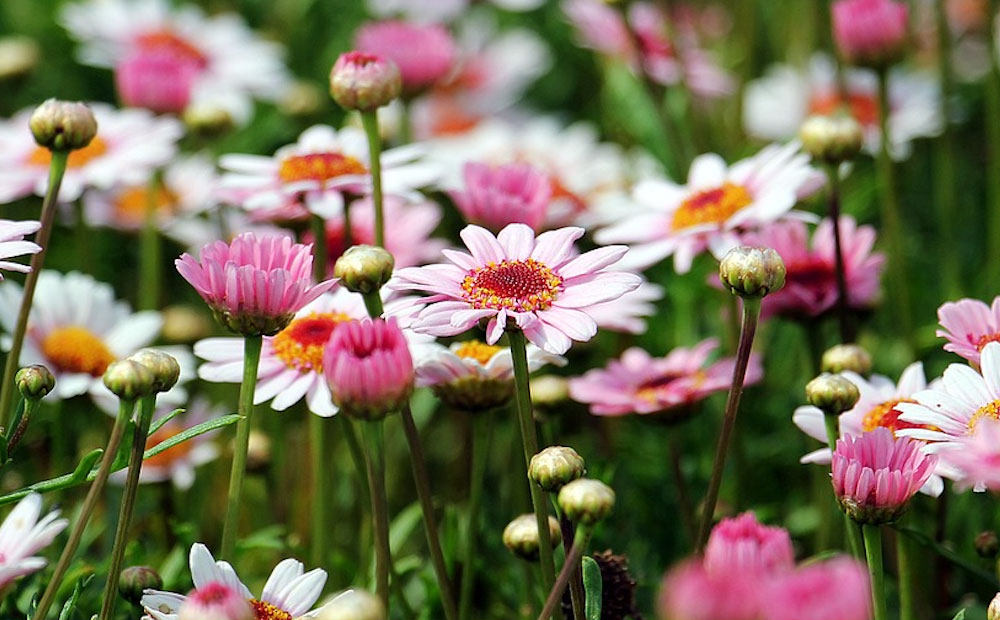
“Plant the right plants and nature will come,” says Doug Tallamy, cofounder of the conservation project Homegrown National Park. Local wildlife populations have coevolved with their region’s native flora. If you get rid of the plants that animals depend on, the entire ecosystem can fall out of whack. Going native can replace what we have taken.
How you go native, depends on where you live. Both Audubon and the National Wildlife Federation have handy native-plant finders based on zip codes. Talk to your local nursery about what native plants it carries and be sure to ask for straight native, not nativars, which may carry attributes that make them less valuable to wildlife, like nutritionally deficient color and altered blooming times.
Native trees bundle long-lasting wildlife habitat with a host of other benefits, making these a high-impact choice in your yard. Oaks are rewilding superstars. Oaks are wildlife favorites that also sequester carbon, feed pollinators, and support healthy watersheds.
Putting Up Nesting Boxes and Bat Houses on Your Property
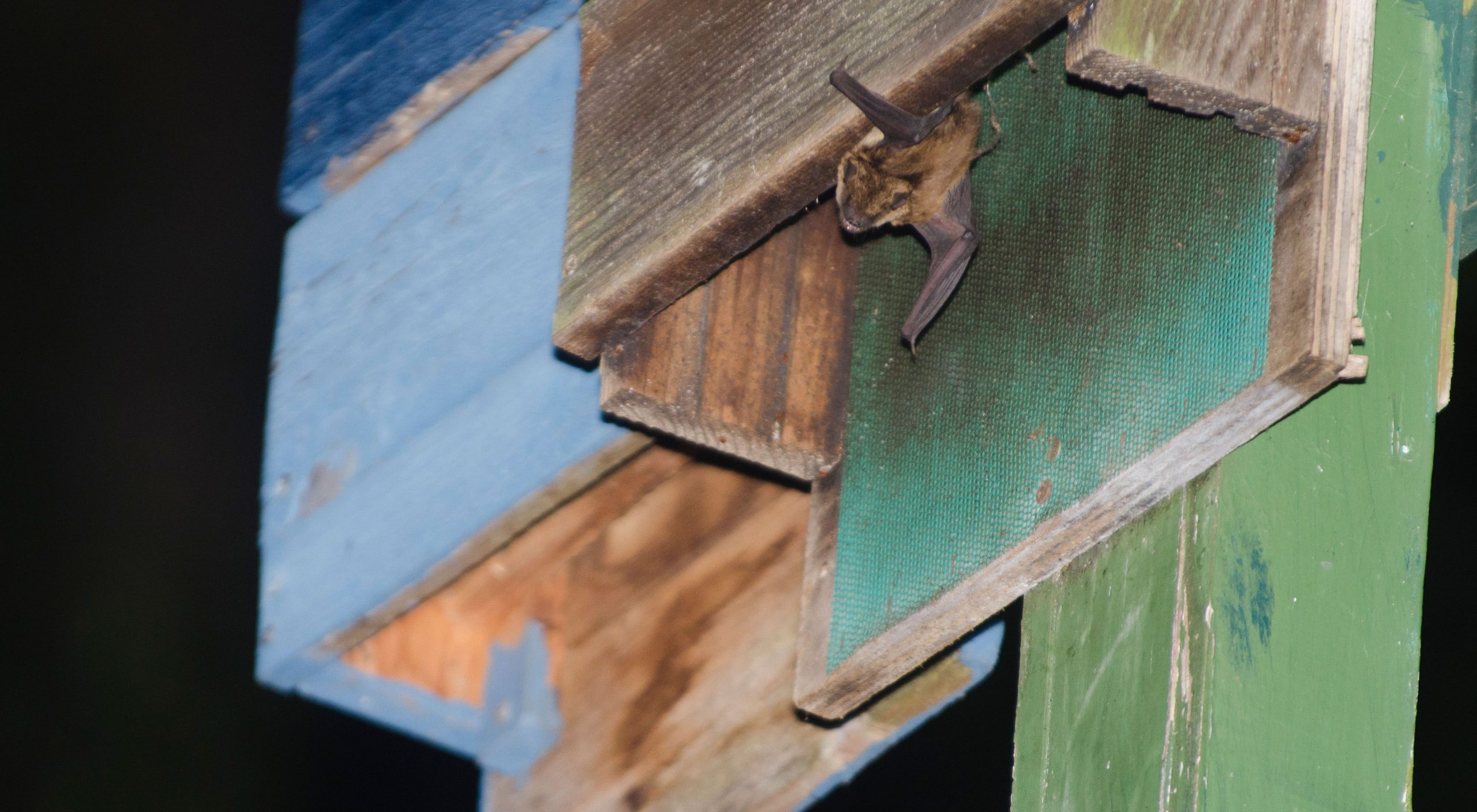
Have you ever thought about putting up nesting boxes and bat houses on your property? One of the key aspects of a wildlife habitat is shelter — cavity nesters, such as chickadees, need a safe space to build their nests while dodging predators and the elements. Nesting boxes can also attract various bird species that may not come to your feeders but are searching for a dwelling place.
The same idea extends to bat houses. Female bats need safe places to raise their young. When you provide them with a home, bats will eat mosquitoes, moths, and beetles in your yard and will be less likely to set up shop in your attic. If you aren’t sure about welcoming bats, know that they usually only give birth to one pup a year. And the brush pile you have been meaning to get around to? Plenty of animals don’t use cavities, so that brush is likely a fixture for creatures including sparrows, warblers, and bugs. So, leave it be!
And now for some upcoming events:

Learn about the Beauty of Bluebirds at Brown County State Park on Saturday, April 15th, from 11 to 11:45 am. Meet in the auditorium at the Nature Center for a presentation detailing the amazing life and habits of the Eastern Bluebird.
Join the Indiana DNR for a free guided hike at the Donaldson Cave Nature Preserve at Spring Mill State Park on Sunday, April 16th beginning at 10 am. This will be a one-hour hike both on and off the trail. Meet at the Donaldson Cave parking lot. Registration is recommended.
Join the naturalist at Brown County State Park on Thursday, April 20th, from 3 to 3:45 pm for a Wildflower Walk. Learn about late spring and early summer wildflowers as you walk through the Nature Center gardens and woods.
Celebrate Earth Day with a Spring 5K Run or Walk at McCormick’s Creek State Park on Saturday, April 22nd, beginning at 8:30 am. The race takes place on paved roads through the park. Register at https://friendsmccormickscreek.org/springrace.
Spring Mill State Park will have an Earth Day Celebration beginning at 10 am on Saturday, April 22nd, a day filled with fun activities, crafts, and hikes teaching you all about the importance of our natural resources.
Feature Report:
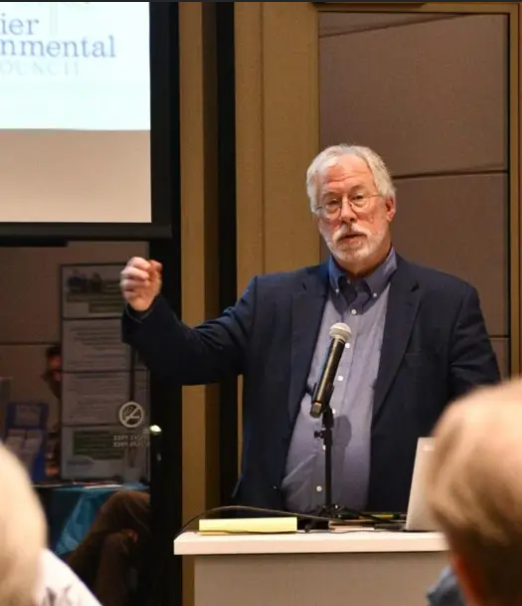
And now, we go to Zyro Roze discussing the Indiana Legislature with Tim Maloney of the Hoosier Environmental Council or HEC.
To hear Zyro’s full interview with Tim Maloney, Senior Policy Director of the HEC, you can find it online as an Eco Report EXTRA.
Volunteer Callout:
Are you looking for a way to make a difference on environmental issues?
Here at EcoReport we are currently looking for reporters, engineers, and segment producers. Our goal is to report facts on how we’re all affected by global climate disruption and the ongoing assaults on our air, land and water. We also celebrate ecologists, tree huggers, soil builders and an assortment of champions who actively protect and restore our natural world, particularly those who are active in south central Indiana.
All levels of experience and all ages are welcome, and we provide the training you’ll need. WFHB also offers internships. To volunteer for Eco-Report, give us a call at (812) 323-1200, or e-mail us at: [email protected]
Credits:
This week’s headlines were written by Norm Holy, Zyro Roze and Julianna Dailey.
Today’s news feature was produced by Zyro Roze and edited by Kade Young and Noelle Herhusky-Schneider
Julianna Dailey assembled the script and was edited by Zyro Roze.
Julianna Dailey compiled our events calendar.
Kade Young and Noelle Herhusky-Schneider produced and engineered today’s show.
Anchors were Cynthia Roberts Hall and Julianna Dailey.
 WFHB Bloomington Community Radio
WFHB Bloomington Community Radio
